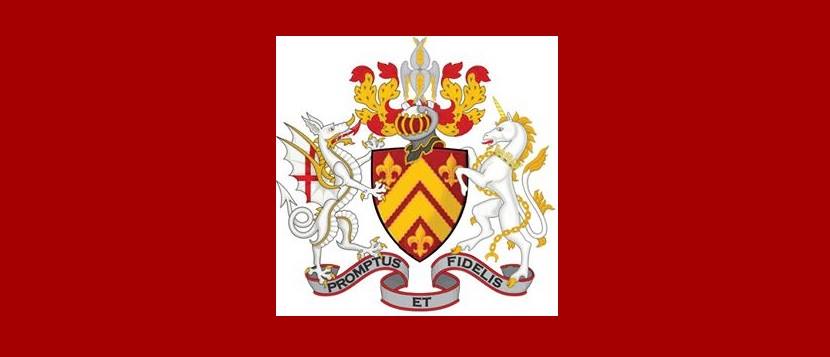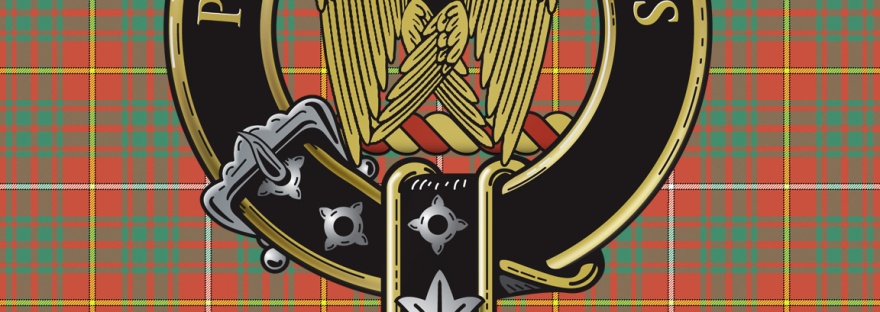CLAN CARRUTHERS INT SOCIETY CCIS PROMPTUS ET FIDELIS

Death at Greyfriars – Robert the Bruce and John Comyn.
On 10 February 1306 Robert the Bruce and John Comyn, Lord of Badenoch, met at Greyfriars Kirk in Dumfries. There was no love lost between them, their respective families had become the bitterest of rivals for the Scottish crown following the death of King Alexander. Bruce had called the meeting and the two men left their swords outside as they entered the church. A fight broke out before the high altar and John Comyn ended up dead.
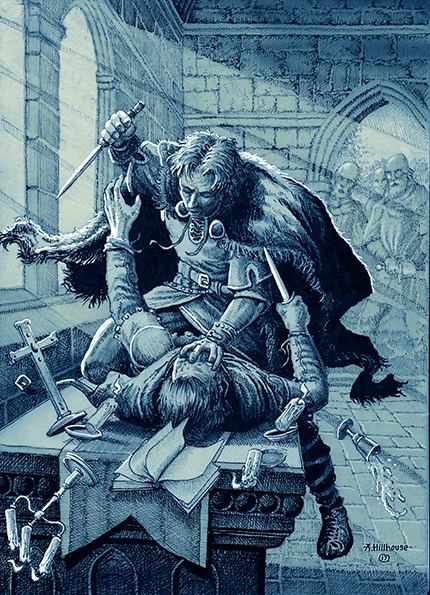
It is impossible to know what really happened in Greyfriars Kirk that day. For hundreds of years historians have argued about what took place and why. Had Bruce planned to murder Comyn all along? Did Red Comyn draw his dagger first?
A letter from the English court to the Pope said that ‘Bruce rose against King Edward as a traitor, and murdered Sir John Comyn, Lord of Badenoch, in the church of the Friars Minor in the town of Dumfries, at the high altar, because John would not assent to the treason which Bruce planned… to resume war.. and make himself king of Scotland.’
As usual, the story is not as simple as it first seems.
At this time the Bruce’s ancestors were of the noblest chivalry of France. De Brus, a Norman baron, who took his name from the lands of Breaux, in Normandy and who came over with the Conqueror. Bruce’s mother, daughter of the Earl of Carrick, was descended from the fighting Celtic chiefs of Galloway. The Bruce boys, Robert, Edward, Thomas, Alexander, and Nigel, were brought up in England, and educated as English knights. They must have grown up to hate John Balliol, who had been granted the vacant Scottish crown by the English king, Edward. The Bruces had been promised this crown by King Alexander himself, should he die without a male heir. Still more must they have hated Balliol when he seized their father’s lands in Annandale, and gave them to John Comyn.
Like most other Scottish nobles at the time, Bruce fought for Edward of England and, sometimes, against him, changing sides to whatever suited the Bruce cause best. This unpredictable behaviour unsettled the English king. Edward did all he could to bind Robert to him, praising and rewarding him for his services. In 1296 he spoke of “the great esteem he had for the good service of Robert de Brus, Earl of Carrick.” Yet, the very next year, he “feared for the faithlessness and inconstancy of Sir Robert de Bruys” who joined, briefly, the side of Wallace. In 1298, when Edward came to Scotland to overthrow Wallace, Bruce burned down the castle of Ayr, lest Edward should take it, and retreated into the wilds of Carrick. For this, Edward punished him by marching through Annandale, taking the Bruces’ castle of Lochmaben, and wasting their estates. A few weeks later, Robert the Bruce was again fighting under the English banner. But in 1299 he tried to drive out the English garrison placed by Edward in the castle of Lochmaben. Once more, in 1304, he changed sides where he was in charge of the English force besieging Stirling Castle.
John Comyn, was the nephew of King John Balliol and grandson of Dervorguilla, lady of Galloway, and thus was a leading member of the senior Scottish royal line. It is argued that, after the collapse of John Balliol’s kingship, John Comyn would never have accepted Robert Bruce as king. Consequently, political compromise between the two men was absolutely out of the question. Called, “the Red Comyn” from his red hair, he had more than once defied King Edward, and he was always ready to pick a quarrel with Bruce.
In 1299 in Peebles, an election was held to select guardians for Scotland. The guardians chosen were Robert the Bruce, Bishop Lamberton, and the Red Comyn. During the meeting an argument erupted between Bruce and the Red Comyn. Comyn “leaped on Robert Bruce and took him by the throat,” and the Earl of Buchan (Sir John’s uncle), leaped on William Lamberton, Bishop of St. Andrews, “and they held them fast until the Steward and others went and stopped the scuffle.” There was certainly no love lost between the two men.
In January 1306 Robert the Bruce was at Edward’s court in London when news came from Scotland. The Red Comyn had written to Edward and confessed that he and Robert the Bruce had been plotting together. His letter claimed that Bruce had offered a deal to Comyn: “Give me your lands, and I will help you to win the crown for yourself; or take my lands, and help to make me king.” Comyn had agreed to take Bruce’s estates, and to help him to win the crown, and had solemnly sworn to tell no one of their compact. But the Comyn saw a fine chance of avenging himself on his old enemy, and told Edward the whole tale.
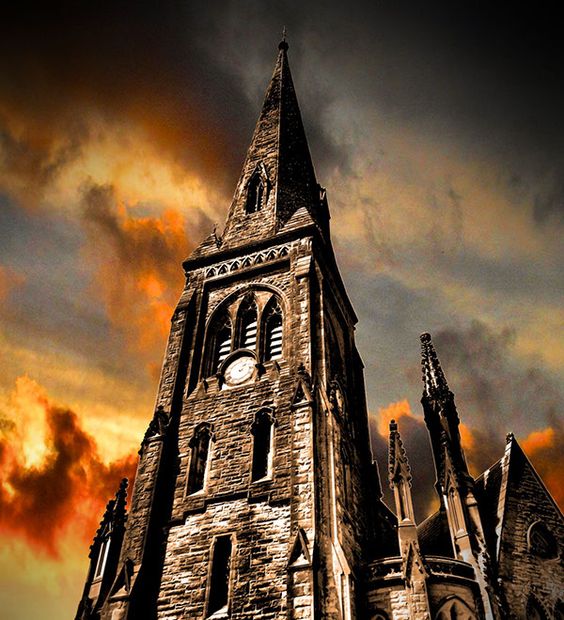 Greyfriars Kirk in Dumfries is now Greyfriars St. Marys Kirk
Greyfriars Kirk in Dumfries is now Greyfriars St. Marys Kirk
Edward promised to reward Comyn, and, in a great rage, sent for Bruce. Bruce answered the allegations so wisely that the king decided to wait until he got more news from Scotland. He decided to do nothing in the meantime, but forbade Bruce to leave the court without his leave.
One night, as the king and some of his lords sat over their wine, king Edward told the lords that he did not mean to delay any longer, but was going to have Robert the Bruce put to death on the morrow. The Earl of Gloucester, a cousin of the Bruce, heard this and he sent a trusty messenger with twelve silver pennies and a pair of spurs to warn the Bruce. Bruce guessed that his cousin’s message meant that he must fly immediately. He gave the money to the messenger, sent his thanks to the earl, and got ready to start for the north.
It was bitter winter weather. The ground was white with snow and legend says that Bruce had his horse, and the horses of his secretary and groom who rode with him, shod backwards to trick his pursuers. In fifteen days they were safely over the Border. In the wild moorland country of the Western Marches they met a man plodding along on foot. From his dress, and from the way he walked, they took him to be a Scot.
The Bruce found him to be extremely evasive upon questioning and subsequently had him searched. Letters from Comyn to the king, advising that Robert the Bruce should at once be put to death, were found upon him. Without more ado the messenger’s head was struck off, and the Bruce and his men galloped onwards.
The Bruce arranged a meeting at the church of the Greyfriars at Dumfries on February 10th, 1306. We do not know who struck the first blow at Peebles, but daggers were drawn, and the Red Comyn fell, stabbed, before the altar. As Bruce hurried out, his face showing the horror of what he had done, two of his companions, Lindsay and Kirkpatrick asked how it was with him.
“Ill,” said the Bruce, “for I doubt I have slain the Comyn.”
“You doubt!” cried Kirkpatrick, “then I’ll mak siccar!” (I’ll make sure.)
Rushing into the church, Kirkpatrick and Lindsay plunged their daggers into the wounded man’s body, and also slew his uncle, Sir Robert Comyn, who tried to save him. The church of the Greyfriars was desecrated. There was blood on the altar steps, the blood of a murdered man.
Apart from these bare facts, nothing certain can be gathered from contemporary accounts. Later Scottish sources all try to justify the crime by amplifying earlier accusations of treachery against Comyn, who certainly was no traitor to Scotland. The English sources portray Robert as a villain who lured Comyn into a church — where he should have been safe — with the intention of committing premeditated murder.
Robert Bruce had now not merely the English king for an enemy, but also all the powerful friends of the man he had slain (through time, Bruce would have to carry out a particularly brutal and murderous campaign against the people and the lands of the north east of Scotland to negate this threat to his authority). The Pope in Rome and all the priests of the Catholic Church would turn against a man who had committed what was to them so horrible and unpardonable a sin.
There was no going back for the Bruce now. Not only had he to fight for a crown and a country—he had to fight for his own life.
The rest is history.
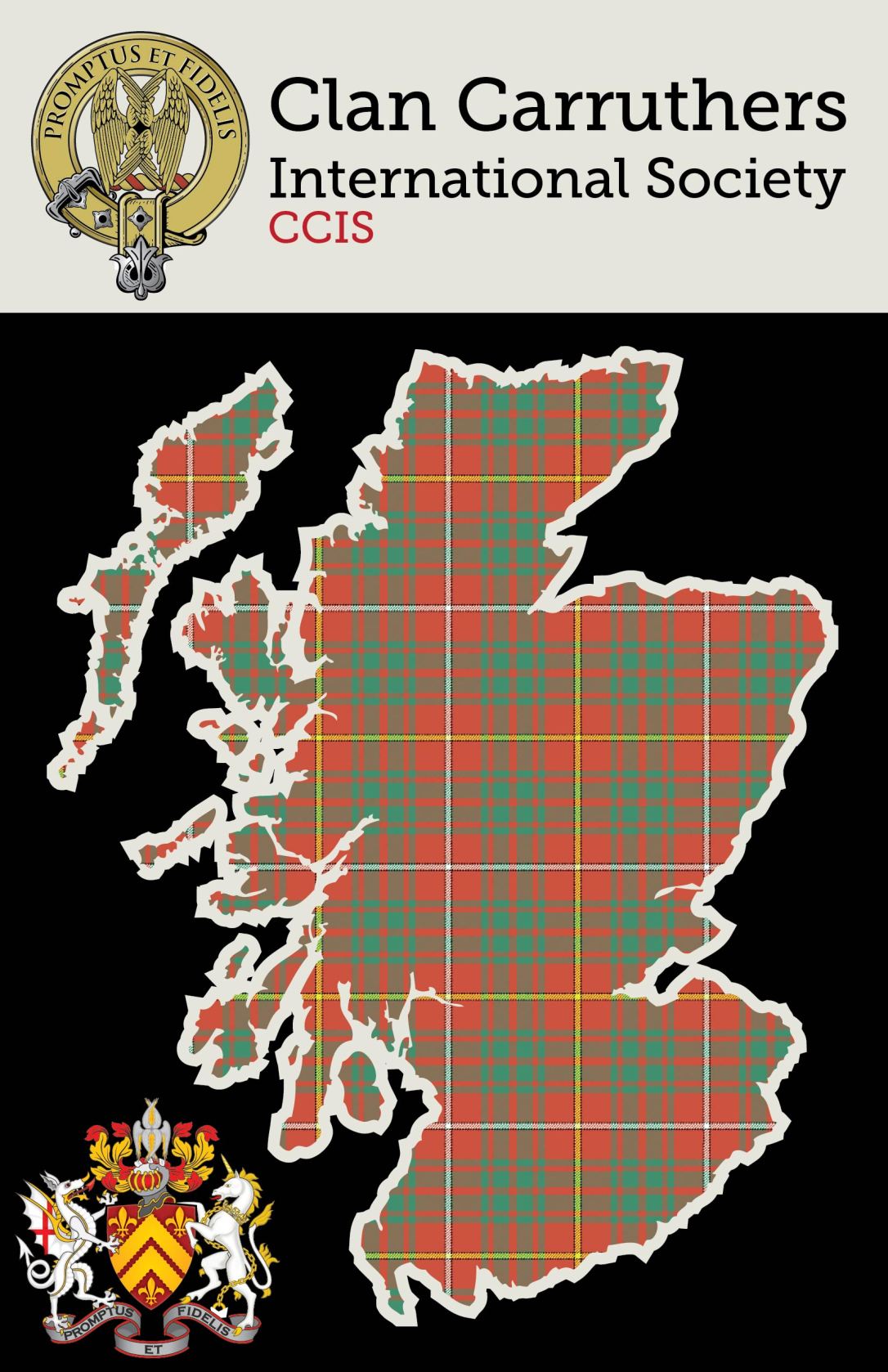
ORIGINAL AND REGISTERED CLAN CARRUTHERS SINCE 1983
CLAN OF OUR ANCESTORS
Preserving Our Past, Recording Our Present, Informing Our Future
Ancient and Honorable Carruthers Clan Int Society LLC
carruthersclan1@gmail.com carrothersclan@gmail.com

CLAN CARRUTHERS INT SOCIETY CCIS HISTORIAN AND GENEALOGIST

You can find us on facebook at :
https://www.facebook.com/carrutherscarrothers.pat.9
https://www.facebook.com/CarruthersClan/
https://www.facebook.com/CarruthersClanLLC
Disclaimer Ancient and Honorable Carruthers Clan International Societ

